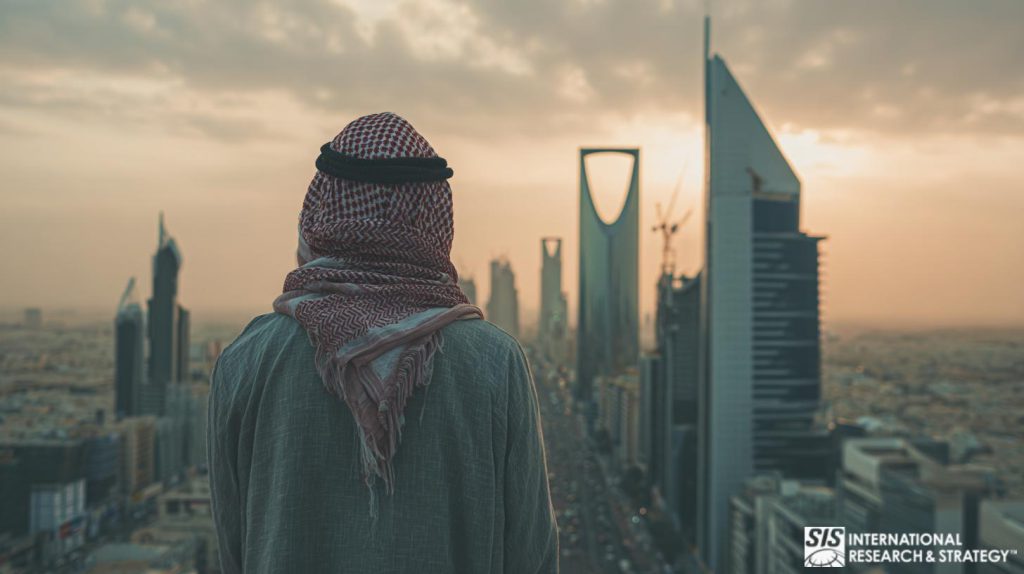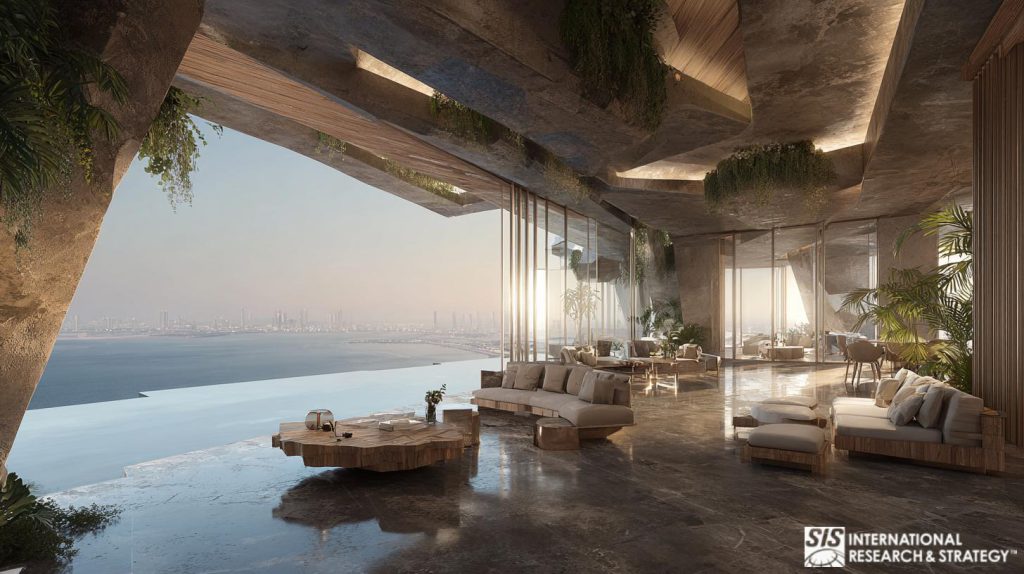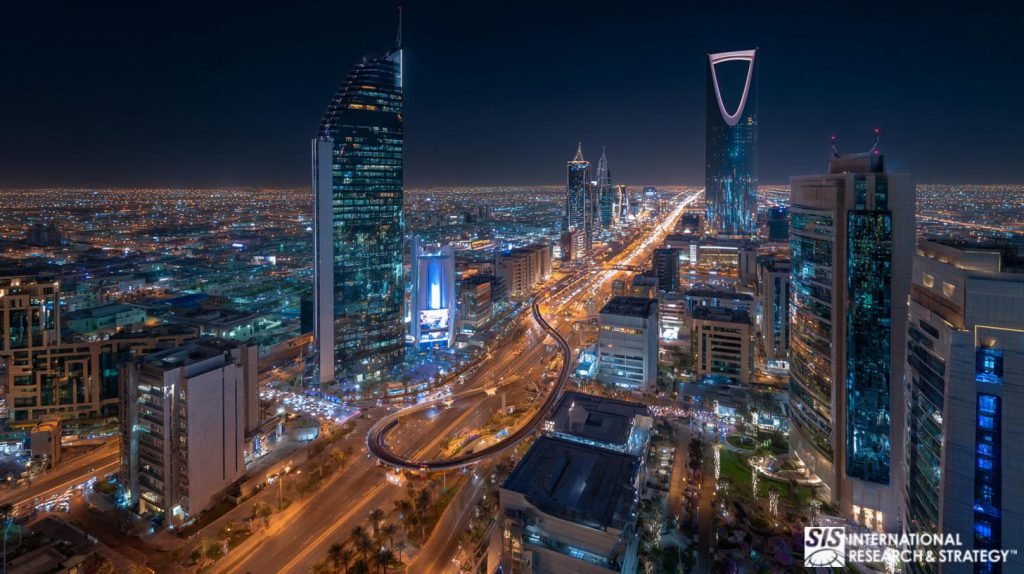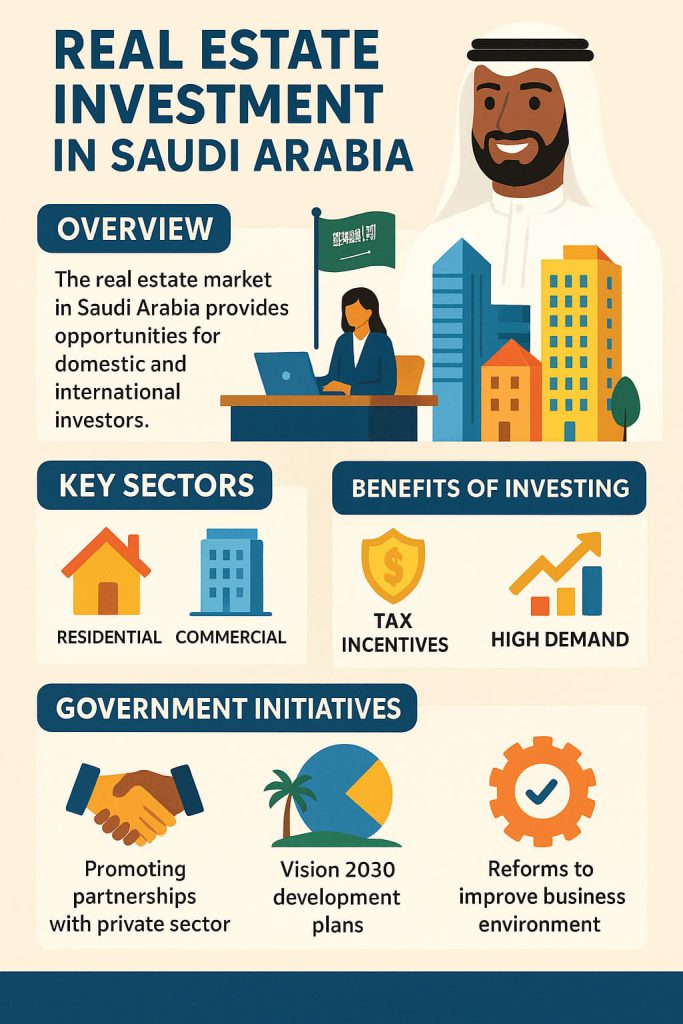Real estate investment in Saudi Arabia

Saudi Arabia is quietly becoming one of the most lucrative real estate markets on the planet.
While most Western investors have been obsessing over Miami condos, London townhouses, and Manhattan office space, an entirely different real estate universe has been forming in the desert kingdom.
Table of Contents
✅ Listen to this PODCAST EPISODE here:
The Vision 2030 Wealth Machine
Vision 2030 isn’t a brochure. It’s not a slogan. It’s not even just a plan.
It’s $1.1 TRILLION of money being injected directly into Saudi real estate and infrastructure. Not monopoly money. Not theoretical allocations. Real capital being deployed right now while everyone else argues about interest rates and recession indicators.
Real estate investment in Saudi Arabia has reached a scale that makes most “booming markets” look like rounding errors in comparison.
Think I’m being dramatic? Consider this: Al Widyan, a single district in Riyadh, wasn’t even conceived five years ago. Today? It’s a $2.7 billion development where early investors have seen property values jump 41% before buildings were even completed.
Let me say that again. 41% appreciation. Before. Completion. That’s a wealth-creation machine operating at warp speed.
The Government Isn’t Just Supporting Real Estate — They’re Creating Real Estate Investment in Saudi Arabia

Foreign investment restrictions that made international investment nearly impossible? Gone.
Bureaucratic approval processes that took years? Compressed to weeks.
Tax incentives? Among the most aggressive on the planet.
This isn’t government tinkering around the edges. This is government fundamentally reengineering an entire sector of the economy. When the Ministry of Housing launched their “Sakani” program, they didn’t just set targets. They put $32 billion behind it. They pre-approved 320,000 families for subsidized mortgages. They partnered directly with developers to ensure supply.
In what universe does government support like this exist for real estate developers? Only in Saudi Arabia, apparently.
Residential Real Estate: The Hidden Housing Crisis Creating Millionaires
The government has committed to increasing homeownership from 47% to 70% by 2030. Do the math on what that means for housing demand.
It’s not just strong. It’s structurally inevitable for real estate investment in Saudi Arabia.
Al Mohamadiya Residential Compound achieved something that defies normal market behavior: 100% pre-leasing before construction was even completed.
With a tenant waiting list 340% larger than the actual number of available units. Their expected yield of 8.5% was crushed by actual returns nearly 4 percentage points higher.
In what world does this happen? Not in mature real estate markets, that’s for sure.
Tourism: Real Estate Investment in Saudi Arabia
Five years ago, international tourism in Saudi Arabia was essentially non-existent.
Today? They’re targeting 100 million annual visitors by 2030. And backing that goal with development capital exceeding $110 billion.
This isn’t expanding existing tourism. It’s creating an entire industry from nothing.
The Red Sea Project, when completed, will feature over 50 hotels across 22 islands.
The economics are mind-bending. Luxury hotel properties that would achieve ADRs (Average Daily Rates) of $350-450 in Dubai are projecting $750-900 in Saudi developments like AMAALA.
With occupancy rates exceeding 70%. Early investors who secured partnerships in these developments aren’t just getting prime assets. They’re locking in valuation multiples that will look absurd (in a good way) within five years.
The City Guide

Let me save you thousands in consulting fees. The Kingdom isn’t one real estate market. It’s multiple markets with different dynamics.
Here’s the inside track:
Riyadh: The Capital Play
The capital is being transformed through the $23 billion Riyadh Green program and the King Abdulaziz Public Transport Project.
Property within 500 meters of new metro stations has appreciated at 2.7x the city-wide average. The government wants to increase Riyadh’s population from 7.5 million to 15-20 million by 2030.
This isn’t organic growth. It’s engineered expansion backed by royal decree.
When Ajdan Real Estate launched their mixed-use community near the diplomatic quarter, they pre-sold units at 42% above projections.
Jeddah: The Regeneration Opportunity
Properties in Al Salamah district traded at 3,600 SAR per square meter in 2018.
Today? 6,200+ SAR.
That’s 72% appreciation during a period when most global markets were stagnant. The restoration of Al Ballad historic district has triggered 45%+ appreciation in surrounding neighborhoods.
Adaptive reuse opportunities abound for investors who understand the transformation of historical properties.
Dammam & Khobar: The Value Play No One’s Watching
While everyone obsesses over Riyadh and megaprojects, the Eastern Province has become the value play smart money is quietly targeting.
Why? Because Dammam and Khobar still offer entry points that seem criminally underpriced relative to economic fundamentals.
The region benefits from proximity to Bahrain (via the 25km King Fahd Causeway), a substantial expatriate community, and Saudi Aramco’s headquarters.
The King Salman Energy Park (SPARK) has evolved from concept to reality in record time, attracting billions of dollars in energy sector investment.
Properties that would command premium values in Riyadh are trading at 30-40% discounts in the Eastern Province, despite comparable income potential.
The Segments Creating Extraordinary Returns
Not all Saudi real estate is created equal. Understanding the emerging trends separates the amateurs from the professionals.
Luxury Real Estate: The Parallel Universe
High-net-worth Saudi nationals who historically bought properties in London, New York, and Dubai are bringing their money home.
Luxury real estate in Saudi Arabia has appreciated 14.3% annually since 2020 – outpacing global luxury benchmarks by miles.
This isn’t normal market behavior. It’s a fundamental recalibration of what’s possible in a market previously known for value rather than prestige.
Affordable Housing: The Counterintuitive Gold Mine
The biggest returns in Saudi real estate might be at the opposite end from luxury.
The Kingdom needs millions of affordable housing units. The government is providing support that rewrites project economics.
Developers in the Sakani program have achieved profit margins exceeding 24% while delivering units at government-specified price points below 500,000 SAR.
How? Development subsidies and guaranteed buyer qualification programs that eliminate both construction risk and absorption risk.
Green Building: The Premium Play
Saudi Arabia is using sustainability as competitive differentiation in a region where environmental considerations were historically an afterthought.
First movers in green building technologies aren securing contracts that competitors literally cannot fulfill due to technical limitations.
The King Abdullah Financial District has set a new benchmark that other developments must match to remain competitive.
The Regulatory Revolution You Didn’t See Coming

Understanding Saudi Arabia’s regulatory evolution is difference between extraordinary success and expensive failure.
Real Estate Investment in Saudi Arabia for Foreigners
Five years ago, foreigners were unable to own property in most of Saudi Arabia. Today, non-Saudis can own property outright in most major cities (except Mecca and Medina).
The foreign investment license process, which once required Byzantine bureaucratic navigation, has been streamlined beyond recognition.
When the government permitted foreign ownership in designated zones, commercial property values in those areas spiked by 28% on average within 12 months. It was a value creation event that early movers captured simply by understanding regulatory evolution before mainstream investors.
Permits & Approvals: Bureaucracy on Fast-Forward
The Saudi Arabian General Investment Authority (SAGIA) has transformed into the Ministry of Investment with a mandate to expedite rather than obstruct.
The “Tayseer” initiative has reduced the number of required permits by 30% and shortened approval timelines by up to 73%. This velocity fundamentally changes project IRR calculations and feasibility assessments.
The Risks Nobody Wants To Talk About
Let’s be realistic about the risks, because they exist and are significant in real estate investment in Saudi Arabia.
Market Volatility:
The Saudi real estate market isn’t immune to cycles, despite strong structural growth drivers. Certain segments have experienced volatility that would traumatize investors accustomed to stable markets.
When oversupply hit Jeddah’s mid-range apartment sector in 2020, rental rates plunged by 18-25% before finding equilibrium.
This volatility isn’t random. It’s a function of a developing market where supply responses often lag demand signals, creating boom-bust dynamics in specific sub-segments.
Timing matters as much as segment selection.
Regulatory Risk: The Moving Target Problem
The pace of regulatory change creates uncertainty that must be actively managed.
Zoning regulations, building codes, fee structures, and approval processes continue to evolve as the market matures.
What was permissible yesterday may be prohibited tomorrow.
When building height restrictions unexpectedly changed in certain Riyadh districts, developers with adaptable designs pivoted while others faced costly redesigns or project abandonment.
The government’s commitment to market development is unwavering, but implementation details remain fluid. This creates both opportunities and hazards for investors without regulatory intelligence networks.
Economic & Political Reality Check
Saudi Arabia’s transformation isn’t happening in a vacuum. Oil price volatility, geopolitical tensions, and global economic cycles still matter.
The Kingdom’s economic diversification efforts remain works in progress rather than completed transitions.
The introduction of value-added tax, reduction of subsidies, and implementation of expatriate levies have impacted consumer purchasing power in specific segments.
These factors don’t negate the opportunity, but they add complexity that must be incorporated into investment strategies.
Cultural Nuance: The Adaptation Imperative
Saudi Arabia is liberalizing rapidly, but cultural considerations remain essential for success.
Design elements, marketing approaches, and community planning must balance modernization with respect for local traditions.
Developments featuring family sections, privacy considerations, and gender-specific amenities have consistently outperformed those that simply imported Western design concepts.
Understanding this cultural equilibrium separates market-leading projects from expensive failures.
The Future: Where Smart Money is Positioning in Real Estate Investment in Saudi Arabia

The trajectory of Saudi Arabia’s real estate market indicates continued expansion, albeit with increasing sophistication and competitive intensity.
Long-Term Investment Math
The structural fundamentals supporting Saudi real estate rank among the strongest globally:
- Population growth exceeding 1.7% annually
- Household formation accelerating as youth population matures
- Income growth outpacing global averages
- Government backing of unprecedented scale
- Supply deficits in key segments that cannot be resolved quickly
Tourism: The Ground-Floor Industry Creation
The Kingdom is developing destinations to accommodate 100 million annual visitors by 2030 – essentially building Las Vegas, Orlando, and Cancun simultaneously.
The Red Sea Project, Amaala, Qiddiya, and AlUla developments represent over $100 billion in tourism-focused real estate.
Early investors aren’t buying into existing demand. They’re positioning to capture value from markets being manufactured through strategic national investment.
Technology: The Leapfrog Effect
Blockchain for property registration, digital twins for urban planning, and AI for facility management are being deployed at a pace impossible in markets with entrenched systems.
Developers using Building Information Modeling (BIM) throughout the project lifecycle are achieving cost savings of 12-18% compared to traditional methods.
NEOM’s planning incorporates technologies most developers consider futuristic – creating a testing ground for innovations that will eventually transform global real estate.
This technological acceleration isn’t just changing operations. It’s redefining what’s possible in property development and management

The Bottom Line: Real Estate Investment in Saudi Arabia
✅ Saudi Arabia’s real estate transformation represents one of the most significant wealth creation opportunities in the global property market.
✅ The window won’t stay open indefinitely. Early entrants are securing positions that will be financially inaccessible to latecomers.
✅ Government initiatives are supporting both supply and demand simultaneously – creating a market environment that simply doesn’t exist elsewhere.
✅ The most attractive segments include affordable housing developed under government programs, logistics properties supporting economic diversification, and tourism assets aligned with national visitor targets. Risks exist but are increasingly quantifiable and manageable through proper structuring and local partnerships for real estate investment in Saudi Arabia.
What Makes SIS International Your Essential Guide to Saudi Real Estate
You need advisors who have walked on actual development sites, getting their shoes dirty. Who’ve negotiated with Saudi officials face-to-face. Who understand not just what’s happening but why it’s happening.
Here’s why investors who are serious about Saudi real estate partner with SIS International:
- CUSTOMIZED APPROACH: Generic market reports are worse than useless – they’re dangerous. They create the illusion of understanding without actionable intelligence. SIS develops research specifically for your investment thesis, whether you’re targeting residential compounds in Riyadh, logistics facilities in Dammam, or hospitality assets in emerging destinations. Your capital deserves better than recycled insights.
- THE 40+ YEARS OF EXPERIENCE: SIS has been helping investors succeed in markets others found too complex or opaque. This historical perspective proves invaluable when interpreting Saudi Arabia’s transformation. While others react to headlines, we connect dots based on decades of regional observation and pattern recognition.
- THE GLOBAL DATABASES FOR THE RECRUITMENT: Our network includes developers, government officials, financiers, and market participants who share information with us that never reaches public documents – creating information asymmetry that directly translates to investment advantage.
- PROJECTS GET DONE FAST: In Saudi’s rapidly evolving market, timing is everything. Traditional consultants take months to deliver reports that are obsolete before they’re printed. SIS provides actionable intelligence in weeks, giving you the first-mover advantage that often determines success or failure in this market.
- AFFORDABLE RESEARCH: SIS offers tiered service options making professional market insights accessible whether you’re a boutique developer exploring your first Saudi project or a global institutional investor allocating nine-figure capital. Our value proposition isn’t based on exclusivity through high fees – it’s based on delivering actionable intelligence that directly improves investment outcomes.
- LOCAL EXPERTISE: Our team includes Saudi nationals and regional specialists who understand the cultural nuances, regulatory environment, and relationship dynamics critical to real estate success. They help you navigate not just what is happening, but why it matters to your specific investment thesis.
- PROVEN TRACK RECORD: SIS has successfully guided multiple real estate ventures across the Middle East. Clients implementing our recommendations report success rates 35-45% higher than those relying on generalized market reports or going it alone.
Frequently Asked Questions About Real Estate Investment in Saudi Arabia
How has Saudi Arabia’s real estate market changed in recent years?
Five years ago, foreign ownership of Saudi real estate was practically impossible. Today? You can purchase directly in most major cities.
The market has evolved from opaque regulations and cash-dominated transactions to digitized property registration and sophisticated mortgage products. The government has morphed from passive regulator to active market creator, providing both supply-side incentives for developers and demand-side support for buyers.
What types of real estate investments are currently most attractive in Saudi Arabia?
Affordable housing developments participating in government programs like Sakani offer extraordinary risk-adjusted returns thanks to development subsidies and guaranteed buyer qualification. These projects routinely achieve 28-35% returns on invested capital despite price controls – economics that would be impossible without government support.
Logistics and industrial properties are experiencing record-low vacancy rates (under 4% in prime locations) with rental growth averaging 12-15% annually as e-commerce expansion and manufacturing reshoring drive demand.
Are there specific incentives for foreign investors in Saudi real estate?
The Premium Residency program has created a clear path to property ownership rights previously unavailable to non-Saudis. In development zones like the Economic Cities, foreign investors can own property with the same rights as Saudi nationals, eliminating the complexity and risk of nominee structures previously required.
For large-scale developments, public-private partnership structures can include extraordinary benefits: government land contributions at below-market valuations, infrastructure development at public expense, and financing packages blending commercial and subsidized capital.
These incentives vary dramatically by project type, location, and alignment with national development objectives, creating asymmetric opportunities for investors who understand how to structure ventures to maximize government support.
What are the main challenges for foreign real estate investors in Saudi Arabia?
Cultural and business practice differences necessitate nuanced understanding of local market dynamics and consumer preferences. What works in Dubai or London often fails spectacularly in Riyadh or Jeddah.
Finding qualified local partners remains essential but requires sophisticated due diligence to distinguish between those offering genuine value and those simply selling access.
For development projects, contractor and supply chain management presents challenges that can devastate project economics if not properly anticipated and structured.
How does Saudi Arabia’s real estate market differ from other Gulf countries?
The sheer size of Saudi Arabia (population 35+ million versus UAE’s 10 million) creates demographic advantages its neighbors cannot match.
While Dubai and Doha built real estate markets primarily targeting international investors and expatriates, Saudi developments increasingly focus on deep domestic demand with international interest as supplementary rather than primary.
Our Facility Location in New York
11 E 22nd Street, Floor 2, New York, NY 10010 T: +1(212) 505-6805
About SIS International
SIS International offers Quantitative, Qualitative, and Strategy Research. We provide data, tools, strategies, reports, and insights for decision-making. We also conduct interviews, surveys, focus groups, and other Market Research methods and approaches. Contact us for your next Market Research project.


